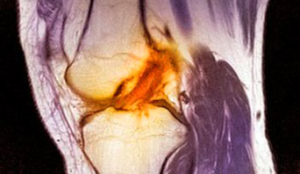Knee Ligament Surgery
If you tear the anterior cruciate ligament (ACL) in your knee, you may need to have reconstructive surgery. The ACL is a tough band of tissue joining the thigh bone to the shin bone at the knee joint. It runs diagonally through the inside of the knee and gives the knee joint stability. It also helps to control the back-and-forth movement of the lower leg.
It runs diagonally through the inside of the knee and gives the knee joint stability. It also helps to control the back-and-forth movement of the lower leg.
ACL injuries
Knee injuries can occur during sports such as skiing, tennis, squash, football and rugby. ACL injuries are one of the most common types of knee injuries, accounting for around 40% of all sports injuries. You can tear your ACL if your lower leg extends forwards too much. It can also be torn if your knee and lower leg are twisted.
Common causes of an ACL injury include:
- Landing incorrectly from a jump
Stopping suddenly
Changing direction suddenly
Having a collision, such as during a football tackle
If the ACL is torn, your knee may become very unstable and lose its full range of movement. This can make it difficult to perform certain movements, such as turning on the spot. Some sports may be impossible to play.
Deciding to have surgery
The decision to have knee surgery will depend on the extent of damage to your ACL and whether it’s affecting your quality of life. If your knee doesn’t feel unstable and you don’t have an active lifestyle, you may decide not to have ACL surgery. However, it’s important to be aware that delaying surgery could cause further damage to your knee.
Before having surgery
Before having ACL surgery, you may need to wait for any swelling to go down and the full range of movement to return to your knee. You may also need to wait until the muscles at the front of your thigh (quadriceps) and the back of your thigh (hamstrings) are as strong as possible. If you don’t have the full range of movement in your knee before having surgery, your recovery will be more difficult. It’s likely to take at least three weeks after the injury occurred for the full range of movement to return.
Before having surgery, you may be referred for physiotherapy to help you regain the full range of movement in your knee. Your physiotherapist may show you some stretches that you can do at home to help keep your leg flexible. They may also recommend low-impact exercise, such as swimming or cycling. These types of activities will improve your muscle strength without placing too much weight on your knee. You should avoid any sports or activities that involve twisting, turning or jumping.
Reconstructive ACL surgery
A torn ACL can’t be repaired by stitching it back together. However, it can be reconstructed by grafting (attaching) new tissue onto it. The ACL can be reconstructed by removing what remains of the torn ligament and replacing it with a tendon from another area of the leg, such as the hamstring or patellar tendon. The patellar tendon attaches the bottom of the kneecap (patella) to the top of the shinbone (tibia).
Risks of ACL surgery
ACL surgery fully restores the functioning of the knee in over 80% of cases. However, your knee may not be exactly like it was before the injury, and you may still have some pain and swelling. This may be because of other injuries to the knee, such as tears or injuries to the cartilage, which happened at the same time as or after the ACL injury. As with all types of surgery, there are some small risks associated with knee surgery, including infection, a blood clot, knee pain, and knee weakness and stiffness.
Recovering from surgery
After having reconstructive ACL surgery, a few people may still experience knee pain or instability. Recovering from surgery usually takes around six months. However, it could be up to a year before you’re able to return to full training for your sport.
Source: NHS UK
http://www.nhs.uk/conditions/repairtotendon/Pages/Introduction.aspx

